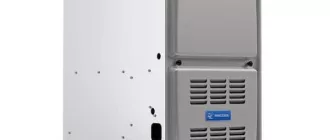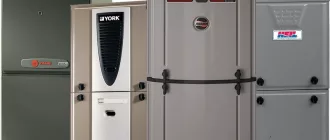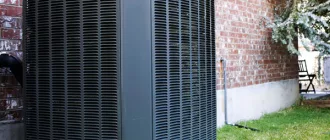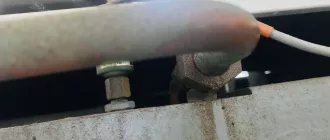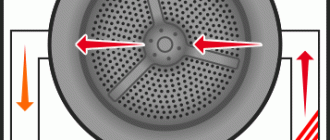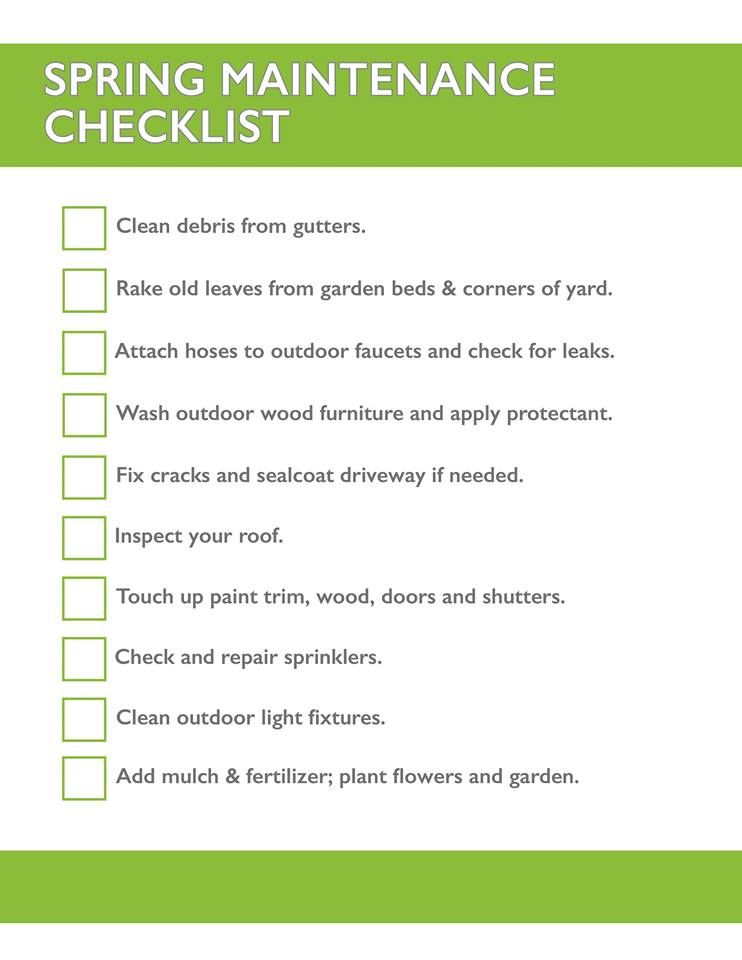
Don’t Forget These Other Spring Household Maintenance Chores
When it comes to spring cleaning, there are a few household maintenance chores that often get overlooked. While everyone remembers to declutter and deep clean their homes, it’s important not to forget about these other tasks that can help keep your home in top shape.
One often neglected chore is checking and servicing your HVAC system. After a long winter of constant use, your heating and cooling system may need some attention. This includes changing air filters, cleaning vents, and scheduling a professional maintenance check to ensure it’s running efficiently.
Another important maintenance task is checking and cleaning your gutters. Throughout the fall and winter, leaves, debris, and even animals can accumulate in your gutters. This can cause clogs and prevent proper drainage, leading to water damage to your home’s foundation or roof. Taking the time to clean out your gutters in the spring can help prevent these issues.
Don’t forget about your outdoor spaces, too. Spring is the perfect time to inspect and clean your patio furniture, as well as your grill. This will ensure that you’re ready for the upcoming barbecue season and can enjoy your outdoor living areas to the fullest.
Lastly, don’t forget to schedule a chimney sweep. After a winter of use, your fireplace and chimney may have a buildup of soot and creosote. This can be a fire hazard if not properly cleaned. Hiring a professional chimney sweep to clean and inspect your chimney can help keep your home safe.
Remember, while decluttering and deep cleaning are important, these other household maintenance chores should not be overlooked. By taking the time to tackle these tasks, you can help ensure that your home is in top shape for the spring season and beyond.
Clean Gutters and Downspouts
In addition to the regular household maintenance tasks that you shouldn’t forget to do in the spring, cleaning your gutters and downspouts is another important chore that needs to be done.
Gutters and downspouts play a crucial role in directing rainwater away from your home, preventing potential water damage and foundation issues. However, over time, they can get clogged with leaves, twigs, and other debris. This can cause water to overflow, leading to damage to your roof, walls, and landscape.
To clean your gutters and downspouts, start by removing any debris that has accumulated. You can use a ladder to access your gutters and a small trowel or scoop to remove the debris. Be careful when working on the ladder and ensure it is stable before climbing up.
After removing the larger debris, use a hose to flush out any remaining dirt or small particles. Start from one end of the gutter and work your way towards the downspout. This will help ensure that the downspout is clear as well. If you notice any blockages, use a plumber’s snake or a pressure washer to clear them out.
Once you have finished cleaning the gutters and downspouts, check for any leaks or damage. Make sure that the gutters are securely attached to the roof and that the downspouts are properly connected. If you notice any issues, make the necessary repairs or contact a professional for assistance.
Cleaning your gutters and downspouts should be done at least twice a year, in the spring and fall. Regular maintenance will help prevent water damage and extend the lifespan of your gutters and downspouts.
So, don’t forget to add cleaning your gutters and downspouts to your list of spring household maintenance chores. It may not be the most glamorous task, but it is an essential one for the well-being of your home.
Inspect and Maintain Your Roof
When it comes to spring household maintenance, don’t forget about inspecting and maintaining your roof.
Your roof plays a crucial role in protecting your home from weather elements, so it’s important to give it proper attention.
Start by visually inspecting your roof for any signs of damage, such as missing or loose shingles, cracked tiles, or damaged flashing. If you notice any issues, it’s advisable to hire a professional roofer to fix them promptly.
Additionally, make sure to clean your gutters and downspouts to prevent water from backing up and causing damage to your roof. Leaves, debris, and other buildup can obstruct the flow of water, so it’s essential to remove them regularly.
Another important aspect of roof maintenance is checking for any signs of leaks or water damage inside your home. Look for dark stains on ceilings or walls, as well as mold or mildew growth, which can indicate water infiltration. If you notice any of these signs, it’s crucial to address the issue immediately to avoid further damage.
Remember, regular maintenance of your roof during the spring season can help prolong its lifespan and ensure the continued protection of your household. Don’t overlook this important chore!
Check and Clean Your Chimney
Don’t forget to add chimney maintenance to your list of spring household chores. While it may seem like a small task, neglecting your chimney can lead to serious problems down the line. A dirty or blocked chimney can cause carbon monoxide to back up into your home, and it can also increase the risk of a chimney fire.
Start by visually inspecting your chimney for any signs of damage. Look for cracks, loose bricks, or a leaning chimney, as these can all be indications of more serious issues. If you notice any of these problems, it’s important to contact a professional chimney inspector to assess the situation.
In addition to a visual inspection, it’s also important to have your chimney cleaned on a regular basis. Over time, creosote and other debris can build up inside the chimney, increasing the risk of a fire. A chimney cleaning professional can remove this buildup and ensure that your chimney is safe and functioning properly.
Lastly, don’t forget to check and clean your chimney cap. The chimney cap plays an important role in keeping debris, animals, and water out of your chimney. Make sure the cap is securely in place and free of any blockages.
By taking the time to check and clean your chimney this spring, you can ensure that it’s functioning safely and efficiently. Don’t overlook this important maintenance task and protect your home and family from potential hazards.
Service Your HVAC System
When it comes to household maintenance, don’t forget about servicing your HVAC system. While you may be focusing on other tasks, such as cleaning and organizing, it’s important to remember that your heating, ventilation, and air conditioning (HVAC) system needs attention too. Here are a few key reasons why you shouldn’t overlook this essential chore:
- Maintaining the efficiency of your HVAC system can help save you money on energy bills.
- Regular maintenance can extend the lifespan of your HVAC system, reducing the need for costly repairs or replacements.
- A well-maintained HVAC system can improve indoor air quality, ensuring a healthier living environment for you and your family.
Here are some important maintenance tasks you should consider for your HVAC system:
- Change the air filters regularly to promote proper airflow and prevent dust and debris from clogging the system.
- Clean the vents and ducts to remove any accumulated dirt, mold, or allergens.
- Inspect the system for any signs of wear or damage, such as loose connections, leaking pipes, or faulty wiring.
- Schedule a professional tune-up and inspection to ensure that your HVAC system is running efficiently and effectively.
By taking the time to service your HVAC system, you can help maintain its performance and ensure the comfort and well-being of your household. Don’t forget about this important chore!
Test Smoke and Carbon Monoxide Detectors
When it comes to spring household maintenance chores, don’t forget to check and test your smoke and carbon monoxide detectors. These devices are essential for keeping your home and family safe.
Smoke detectors are designed to alert you if there is a fire in your home. They are typically installed in bedrooms, hallways, and common areas. Regularly testing your smoke detectors ensures that they are functioning properly and will provide an early warning in case of a fire.
Carbon monoxide detectors, on the other hand, are crucial for detecting the presence of this odorless and colorless gas. Carbon monoxide can be produced by appliances such as furnaces, water heaters, and stoves. Faulty ventilation systems or blocked vents can lead to a build-up of carbon monoxide gas, which can be deadly if not detected. Testing your carbon monoxide detectors ensures that they are working correctly and will alert you if there is a dangerous level of carbon monoxide in your home.
Testing these detectors is a straightforward process. Most detectors have a test button that you can press to check if the alarm sounds. You should test each detector individually and replace the batteries if needed. It is recommended to test your smoke and carbon monoxide detectors at least once a month to ensure their proper functioning.
Smoke and carbon monoxide detectors play a crucial role in keeping your family safe, so it’s essential not to overlook them during your spring household maintenance tasks. By regularly testing these detectors, you can have peace of mind knowing that your home is protected from potential fire and carbon monoxide dangers.
| Test smoke detectors | At least once a month |
| Test carbon monoxide detectors | At least once a month |
Replace Batteries in Your Smoke and Carbon Monoxide Detectors
When it comes to household maintenance chores, don’t forget about the importance of replacing the batteries in your smoke and carbon monoxide detectors. It’s easy to overlook this task, but it is crucial for the safety of your family and home.
Spring is the perfect time to replace the batteries in your detectors, as you are already thinking about other maintenance tasks. These devices are your first line of defense against fires and carbon monoxide poisoning, so it’s important to ensure they are working properly.
To get started, gather the necessary supplies. You will need fresh batteries that are appropriate for your specific detectors. Check the manufacturer’s instructions or the back of the detectors to determine the correct battery type.
Next, turn off the power to the detectors. This can usually be done by simply twisting the detector counterclockwise until it releases from the mounting bracket. Once it is free, disconnect the power source by pulling out the battery compartment.
Remove the old batteries and dispose of them properly. Don’t forget to recycle them if possible. Insert the new batteries into the compartment, ensuring they are properly aligned with the positive and negative terminals.
Once the new batteries are inserted, reattach the battery compartment to the detector and twist it back onto the mounting bracket. Ensure it is securely fastened.
After replacing the batteries, test the detectors to make sure they are working correctly. Press the test button on each detector and listen for the loud, piercing sound. If the sound is weak or non-existent, double-check that the batteries are installed correctly. If the problem persists, it may be time to replace the entire detector.
Lastly, don’t forget to mark the date of battery replacement on a calendar or in your phone. This will serve as a reminder to replace the batteries again in the future.
| 1. Gather the necessary supplies, including fresh batteries |
| 2. Turn off the power to the detectors |
| 3. Remove the old batteries and dispose of them properly |
| 4. Insert the new batteries into the compartment |
| 5. Reattach the battery compartment to the detector |
| 6. Test the detectors to make sure they are working correctly |
| 7. Mark the date of battery replacement as a reminder for the future |
By following these steps and regularly replacing the batteries in your smoke and carbon monoxide detectors, you can ensure the safety of your home and loved ones.
Clean and Seal Your Deck or Patio
As part of your spring household maintenance chores, don’t forget to clean and seal your deck or patio. These outdoor spaces can accumulate dirt, dust, and debris over time, and a thorough cleaning is recommended every spring to maintain their appearance and extend their lifespan.
To clean your deck or patio, start by removing any loose debris such as leaves, twigs, and dirt. You can use a broom or a leaf blower to sweep off the surface. Next, use a mild detergent mixed with water and a stiff bristle brush to scrub away any stains or grime. Rinse thoroughly with a garden hose to remove the soap residue.
If your deck or patio is made of wood, it’s important to inspect it for any signs of damage or rot. Look for loose or splintered boards, and replace them as needed. If there are any mold or mildew spots, use a bleach solution to kill and remove them.
Once your deck or patio is clean, you should consider sealing it to protect it from the elements. A wood sealant will help prevent water damage, warping, and fading caused by UV rays. Apply the sealant according to the manufacturer’s instructions, making sure to cover all the surfaces evenly. Allow sufficient drying time before placing any furniture or decorations on the deck or patio.
Regularly cleaning and sealing your deck or patio will not only enhance its appearance, but it’ll also ensure its longevity. By taking care of these maintenance tasks in the spring, you’ll be able to enjoy your outdoor space throughout the summer and beyond.
Inspect and Repair Exterior Caulking and Sealing
Don’t forget about the important maintenance tasks for your household this spring. While you may have a checklist of chores that need to be done, it’s crucial that you don’t overlook inspecting and repairing the exterior caulking and sealing of your home.
These often overlooked maintenance chores play a key role in protecting your home from various weather elements and preventing potential water damage. Over time, caulking and sealing can become cracked or damaged, allowing water to seep in and cause costly repairs.
To ensure the integrity of your home’s exterior sealing, inspect all caulking and sealing areas, such as windows, doors, and vents. Look for any signs of wear and tear, including cracks, gaps, or areas where the caulk has pulled away from the surface. These issues can be easily spotted if you pay attention to detail.
If you notice any damage, it’s essential to repair it promptly. Remove any loose or deteriorated caulk using a putty knife or a caulk removal tool. Clean the area thoroughly to ensure proper adhesion for the new caulk. Then, apply a new bead of caulk, making sure to fill any gaps or cracks completely.
When choosing caulk for exterior use, opt for a high-quality, weather-resistant caulk that is designed specifically for outdoor applications. This type of caulk will provide better protection against the sun, rain, and extreme temperatures.
Remember, regular inspection and repair of caulking and sealing are crucial to maintain the integrity of your home’s exterior. By taking these simple steps, you can prevent potential water damage and extend the lifespan of your home’s exterior materials.
Check and Repair Window Screens
Don’t forget these other spring household maintenance chores.
- Check the condition of your window screens.
- Look for any rips or tears in the mesh that may let bugs or debris into your home.
- If you find any damage, consider repairing or replacing the screen to ensure proper ventilation and protection.
- You can patch small holes with a screen repair kit, or replace the entire screen if necessary.
By inspecting and repairing your window screens, you can enjoy the fresh air without worrying about pests or outdoor elements entering your home.
Clean and Organize Your Garage
When it comes to spring household maintenance chores, don’t forget to tackle the task of cleaning and organizing your garage. The garage is often a forgotten space, full of clutter and items that need to be sorted and organized.
Start by removing everything from the garage and give the space a good cleaning. Sweep the floors, wipe down any shelves or surfaces, and dust off any cobwebs. This will help create a fresh and clean space to work with.
Next, sort through all the items that were removed from the garage. Create piles for items to keep, donate, and throw away. Be honest with yourself about what you truly need and use, and let go of anything that is no longer serving a purpose in your life.
Once you have sorted through everything, it’s time to organize. Invest in some storage solutions such as shelves, bins, and hooks to help keep everything in its place. Group similar items together and label boxes to make it easy to find what you need.
Take the opportunity to also evaluate your garage’s layout and make any necessary changes to optimize the space. Consider adding additional shelving or cabinets, or installing a pegboard to hang tools and equipment.
By taking the time to clean and organize your garage this spring, you will not only create a functional and efficient space, but you will also eliminate clutter and create a more organized home overall. Don’t forget to add this task to your spring household maintenance checklist!
Inspect and Test Your Lawn Irrigation System
As spring arrives, don’t forget to add inspecting and testing your lawn irrigation system to your list of household maintenance chores. With the weather warming up, it’s important to ensure that your irrigation system is in proper working order to keep your lawn healthy and vibrant.
Here are a few tasks to remember when checking your lawn irrigation system:
- Inspect the sprinkler heads: Walk around your yard and examine each sprinkler head. Look for any signs of damage or wear and tear. Replace any broken or faulty sprinkler heads to ensure proper water distribution.
- Check for leaks: Inspect the pipes and connections of your irrigation system for any signs of leaks. Leaking water can not only waste a valuable resource but also result in water damage to your property.
- Clear out any obstructions: Remove any debris or dirt that may have accumulated around the sprinkler heads or along the irrigation lines. This will help prevent clogs and ensure the water flows freely.
- Test the water pressure: Use a pressure gauge to check the water pressure of your irrigation system. Low or inconsistent pressure can indicate a problem with your system and may require professional assistance to fix.
- Adjust the sprinkler settings: Ensure that the sprinkler heads are positioned correctly to cover your lawn evenly. Make any necessary adjustments to the direction and range of the sprinkler heads to avoid overwatering or leaving dry patches.
- Program your irrigation controller: If you have an automated irrigation system, review and update the settings on your irrigation controller. Adjust the watering schedule and duration based on the changing weather conditions and the needs of your lawn.
By performing these inspections and tests, you can identify and address any issues with your lawn irrigation system before they become major problems. This will help you maintain a lush and thriving lawn throughout the spring and summer months.
Trim Trees and Shrubs
When it comes to household maintenance, don’t forget to add trimming trees and shrubs to your list of spring chores. While it is important to focus on cleaning and organizing the inside of your home, it is equally important to pay attention to the exterior.
Trimming trees and shrubs not only helps to maintain the overall appearance of your property, but it can also promote healthier growth. By removing dead or overgrown branches, you allow more sunlight and airflow to reach the plants, which can lead to stronger and more vibrant foliage.
Regular pruning also helps to prevent the spread of disease and pests. By removing any infected or infested branches, you can minimize the risk of these issues spreading to other areas of your garden or landscape.
When trimming trees and shrubs, it is important to follow proper techniques and use the right tools. If you are unsure about how to proceed, consider consulting a professional arborist for advice or assistance.
Remember, taking care of your outdoor space is just as important as taking care of the inside of your home. So don’t forget to include trimming trees and shrubs in your spring household maintenance chores!
Clean and Maintain Your Outdoor Furniture
When it comes to spring household maintenance chores, don’t forget about cleaning and maintaining your outdoor furniture. After a long winter, your furniture may be dirty, weathered, or in need of some repairs. Here are some tasks you can tackle to keep your outdoor furniture looking its best:
- Start by thoroughly cleaning your furniture. Use a mild soap and water solution to remove dirt, dust, and grime. Scrub with a brush or sponge, and then rinse with water.
- If your furniture has any stains or mold, consider using a specialized cleaner to remove them. Follow the instructions on the cleaner’s packaging, and be sure to wear gloves and protective clothing.
- Inspect your furniture for any signs of damage or wear. Replace any broken or loose parts, such as screws, bolts, or cushions.
- If your furniture is made of wood, it may need to be sanded and refinished. This will help protect it from the elements and keep it looking its best.
- Consider applying a protective sealant or paint to your furniture. This will help protect it from the sun, rain, and other outdoor elements.
- Cover your furniture with weatherproof covers when not in use. This will help prevent damage from rain, snow, and UV rays.
- Regularly clean and maintain your outdoor furniture throughout the spring and summer seasons. This will help extend its lifespan and keep it looking great for years to come.
By following these tips, you can ensure that your outdoor furniture stays in good condition and is ready for use when the warmer weather arrives. Don’t forget to add this task to your spring household maintenance list!
Q&A:
What are some other important household maintenance chores to remember this spring?
In addition to the usual spring cleaning tasks, some other important household maintenance chores to remember this spring include inspecting and cleaning the gutters, checking and replacing air filters, testing and maintaining smoke detectors, inspecting and maintaining the HVAC system, and trimming trees and bushes.
Why is it important to inspect and clean the gutters in the spring?
Inspecting and cleaning the gutters in the spring is important to prevent water damage and ensure proper drainage. Over time, gutters can get clogged with leaves, dirt, and other debris, which can lead to water overflow and eventually cause damage to the roof, walls, and foundation of the house.
How often should air filters be checked and replaced?
Air filters should be checked every 1-3 months and replaced as needed. This is important for maintaining good indoor air quality and proper functioning of the HVAC system. Dirty or clogged air filters can restrict airflow, reduce energy efficiency, and even lead to system breakdown.
What is the purpose of testing and maintaining smoke detectors?
The purpose of testing and maintaining smoke detectors is to ensure they are in proper working condition and can effectively alert occupants in the event of a fire. This includes testing the batteries, cleaning the detectors, and replacing any malfunctioning units. Properly functioning smoke detectors can save lives.
Why is it important to inspect and maintain the HVAC system in the spring?
Inspecting and maintaining the HVAC system in the spring is important to ensure it is working efficiently and to prevent any potential issues during the summer months when it will be running more frequently. Regular maintenance can help prolong the life of the system, improve energy efficiency, and save on energy costs.
What are some other household maintenance chores to remember in spring?
In addition to the usual spring cleaning tasks like dusting and decluttering, there are a few other household maintenance chores you shouldn’t forget. These include cleaning out your gutters, checking your roof for any damage, servicing your air conditioning unit, and inspecting your windows and doors for drafts or leaks.

